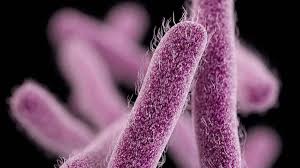
STORY HIGHLIGHTS
Naegleria fowleri is typically found in living, breathing people of freshwater, including lakes and streams
A deadly brain-eating amoeba called Naegleria fowleri is gradually advancing northwards from the southern United States due to climate change, according to the latest report.
The Centers for Disease Control and Prevention (CDC) revealed that the geographic range of these cases has been shifting northward, with more cases popping up in Midwestern states than before.
Naegleria fowleri is typically found in living, breathing people of freshwater, including lakes and streams. When an individual is infected, a really uncommon event typically coming about because of swimming or diving in infected waters, the single adaptable cell goes from the nose into the mind.
It causes staggering mind contamination known as essential amebic meningoencephalitis (PAM), which is all around lethal. Diseases happen when debased water goes up an individual’s nose, permitting the creature to enter the cerebrum through the olfactory nerves (answerable for your feeling of smell) and decimate mind tissue. Gulping tainted water won’t cause disease, the CDC says.
Since N. fowleri flourishes in warm waters, up to 113 degrees Fahrenheit (45 degrees Celsius), it’s possible that warming global temperatures may affect the organisms’ geographic range, the authors said.
In the new examination, distributed Wednesday (December 16) in the diary Emerging Infectious Diseases, the specialists investigated U.S. instances of N. fowleri connected to recreational water presentation —, for example, swimming in lakes, lakes, waterways, or stores — from 1978 to 2018. They recognized an aggregate of 85 instances of N. fowleri that met their standards for the investigation (for example cases that were attached to recreational water presentation and included area information.)
During this time, the quantity of yearly announced cases was genuinely consistent, going from zero to six every year. By far most of the cases, 74, happened in southern states; yet six were accounted for in the Midwest, including Minnesota, Kansas, and Indiana. Of these six cases, five happened after 2010, the report said.
The uplifting news: there have just been 34 contaminations announced in the US over the most recent ten years, as per CDC information.
The examination, which inspected CDC information from 1978 t0 2018, found that new cases moved northwards at about 8.2 miles every year.
“It is conceivable that rising temperatures and resulting increments in recreational water use, for example, swimming and water sports, could add to the changing the study of disease transmission of PAM,” the paper peruses.





































